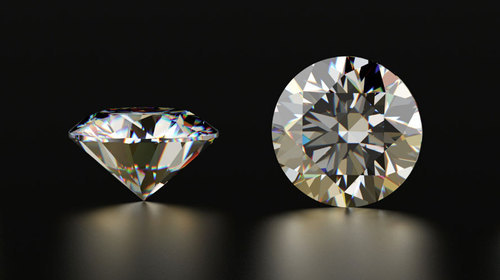
What Is HPHT?
HPHT stands for High Strain High Temperature, a technique used to make lab-grown diamonds that mirrors the normal circumstances under which diamonds form. In the HPHT process, carbon is exposed to very high strain and temperature, recreating the circumstances profound inside the World’s mantle. This process brings about diamonds that are artificially and actually indistinguishable from normal diamonds. Understanding hpht vs cvd lab-grown diamonds includes perceiving the conventional methodology of HPHT and its part in the formation of great gemstones.
What Is CVD?
CVD, or Synthetic Vapor Testimony, is another technique for delivering lab-grown diamonds. Dissimilar to HPHT, CVD includes putting a diamond seed in a vacuum chamber loaded up with carbon-rich gases. The gases are ionized to store carbon iotas onto the seed, forming a diamond precious stone layer by layer. This process happens at lower temperatures contrasted with HPHT and considers exact command over the diamond’s qualities. The examination of HPHT vs. CVD lab-grown diamonds features the distinctions in innovation and creation techniques that impact the end result.
Looking at HPHT and CVD Processes
While looking at HPHT vs. CVD lab-grown diamonds, a few factors become an integral factor, including the creation process, cost, and the subsequent diamond qualities. HPHT diamonds are often described by their one of a kind gem formations and may display specific color varieties because of the great strain and temperature conditions. Conversely, CVD diamonds normally have less considerations and can be delivered in a more extensive scope of colors with more noteworthy command over lucidity and size. Every strategy enjoys its own benefits and limits, impacting the decision of lab-grown diamonds.
Quality and Attributes
The quality and attributes of HPHT vs. CVD lab-grown diamonds can vary in view of the creation strategy. HPHT diamonds might show unmistakable development examples and considerations that are more uncommon in CVD diamonds. These attributes can influence the diamond’s appearance and worth. CVD diamonds, then again, will generally have more uniform precious stone designs and less considerations, coming about in a more clear and more consistent appearance. Understanding these distinctions assists purchasers with picking the lab-grown diamond that best suits their inclinations and requirements.
Cost Considerations
Cost is a huge factor while looking at HPHT vs. CVD lab-grown diamonds. For the most part, HPHT diamonds might be more affordable because of the lower creation costs related with the high-pressure process. CVD diamonds, while often more exorbitant, offer more prominent command over color and lucidity, which can impact their cost. The decision among HPHT and CVD can rely upon the purchaser’s spending plan and the particular characteristics they are looking for in a lab-grown diamond.
Market Patterns and Availability
Market patterns and availability assume a part in the correlation of HPHT vs. CVD lab-grown diamonds. The two techniques are generally utilized in the business, however CVD man made diamonds have become progressively famous because of their capacity to create bigger and greater stones with less considerations. HPHT diamonds are additionally very much respected, especially for their remarkable qualities and historical importance in lab-grown diamond creation. The availability of each sort might shift in view of market demand and creation capacities.
Environmental Effect
While considering HPHT vs. CVD lab-grown diamonds, assessing the environmental effect of every method is important. Both HPHT and CVD processes are more environmentally well disposed contrasted with customary diamond mining, yet they vary in their asset utilization. HPHT diamonds require high energy levels to accomplish the essential tension and temperature, while CVD diamonds regularly utilize less energy and produce less waste. Understanding the environmental ramifications of every technique can assist purchasers with pursuing a more informed and supportable decision.
Picking either HPHT and CVD
Picking either HPHT and CVD lab-grown diamonds includes assessing different factors, including the ideal diamond attributes, spending plan, and individual inclinations. HPHT diamonds offer a conventional methodology with novel development designs, while CVD diamonds give more prominent command over lucidity and color. Purchasers ought to consider their priorities and consult with gem dealers to figure out which strategy best lines up with their necessities. Each sort of lab-grown diamond has its own benefits, and the decision at last relies upon individual inclinations and requirements.
Conclusion
The correlation of HPHT vs. CVD lab-grown diamonds features the assorted choices available in the world of present day gemstones. The two strategies offer extraordinary benefits and attributes, making them appropriate for various inclinations and spending plans. By understanding the distinctions among HPHT and CVD processes, purchasers can pursue informed choices while choosing lab-grown diamonds. Whether selecting the conventional methodology of HPHT or the accuracy of CVD, lab-grown diamonds give a supportable and moral option in contrast to mined gemstones, mirroring the developing landscape of the gems business.
